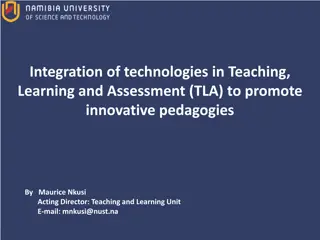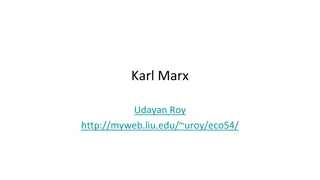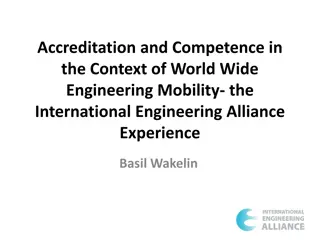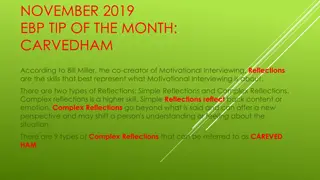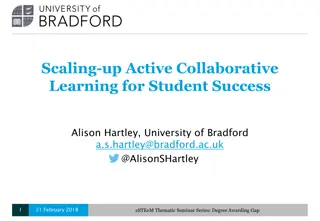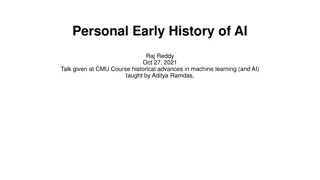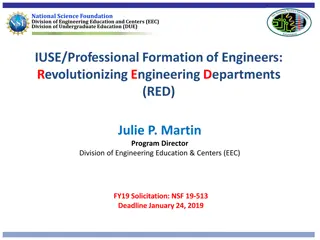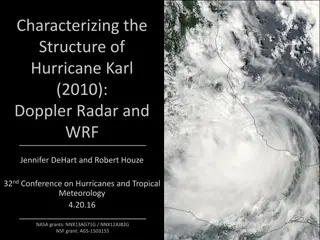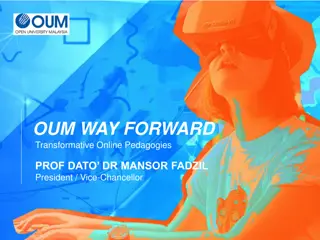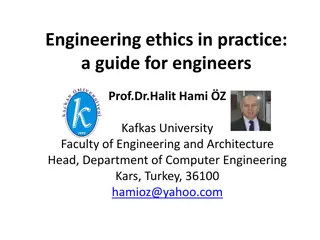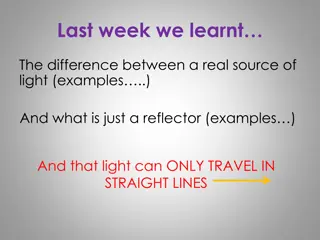Innovations in Engineering Education: Reflections on Pedagogies of Engagement by Karl A. Smith
Reflections on pedagogical approaches such as Cooperative Learning and Challenge-Based Learning as discussed by Karl A. Smith in the context of transforming higher education towards student-centered learning experiences. Smith emphasizes the shift towards designing effective learning environments and experiences, highlighting the importance of student-student interactions. The narrative delves into the evolution of engineering education, focusing on advancements in teaching practices and fostering innovation in STEM fields through collaborative efforts.
Download Presentation

Please find below an Image/Link to download the presentation.
The content on the website is provided AS IS for your information and personal use only. It may not be sold, licensed, or shared on other websites without obtaining consent from the author.If you encounter any issues during the download, it is possible that the publisher has removed the file from their server.
You are allowed to download the files provided on this website for personal or commercial use, subject to the condition that they are used lawfully. All files are the property of their respective owners.
The content on the website is provided AS IS for your information and personal use only. It may not be sold, licensed, or shared on other websites without obtaining consent from the author.
E N D
Presentation Transcript
Pedagogies of Engagement: Reflections on Readings Karl A. Smith STEM Education Center / Technological Leadership Institute / Civil Engineering University of Minnesota & Engineering Education Purdue University ksmith@umn.edu - http://www.ce.umn.edu/~smith Grinnell College June 2, 2014
It could well be that faculty members of the twenty-first century college or university will find it necessary to set aside their roles as teachers and instead become designers of learning experiences, processes, and environments. James Duderstadt, 1999 Nuclear Engineering Professor; Former Dean, Provost and President of the University of Michigan
Design Foundations Science of Instruction (UbD) No Yes Good Theory/ Poor Practice Good Theory & Good Practice Yes Science of Learning (HPL) Good Practice/ Poor Theory No Sources: Bransford, Brown Cocking. 1999. How people learn. National Academy Press. Wiggins, G. McTighe, J. 2005. Understanding by design, 2ed. ASCD. Sources: Bransford, Brown & Cocking. 1999. How people learn. National Academy Press. Wiggins, G. & McTighe, J. 2005. Understanding by design, 2ed. ASCD.
Guiding questions What are the key arguments supporting PoEs, especially the student-student interaction aspects? Reflect on your experience with/practice of Pedagogies of Engagement, especially Cooperative Learning and Challenge-Based Learning (Case, Problem, Project). How did your experiences relate to the features described in PoE? How might PoEs be used to help students achieve the enduring outcomes in the course you re designing? 6
Engineering Education: Advancing the Practice Karl Smith Innovation Cooperative Learning Need identified ~1974 Introduced ~1976 FIE conference 1981 JEE paper 1981 Research book 1991 Practice handbook 1991 2006 Change paper 1998 Teamwork and project management 2000 2014 JEE paper 2005 Ed Psy Review paper 2007 Research Process Metallurgy 1969 -1992 Learning ~1974 Design ~1995 Engineering Education Research & Innovation ~ 2000 STEM Education ~ 2010 STEM Innovation NSF I-Corps-L ~ 2013 National Academy of Engineering - Frontiers of Engineering Education Symposium - December 13-16, 2010 - Slides PDF [Smith-NAE-FOEE-HPL-UbD-12-10-v8.pdf]
Process Metallurgy Dissolution Kinetics liquid-solid interface Iron Ore Desliming solid-solid interface Metal-oxide reduction roasting gas- solid interface Flotation gas-liquid-solid interfaces
Dissolution Kinetics Theory Governing Equation for Mass Transport Research rotating disk Practice leaching of silver bearing metallic copper & printed circuit-board waste = 2 ( ) c v D c 2 dc d c = vy D 2 dy dy
First Teaching Experience Practice Third-year course in metallurgical reactions thermodynamics and kinetics
Engineering Education Practice Third-year course in metallurgical reactions thermodynamics and kinetics Research ? Theory ? Theory Research Evidence Practice
Pedago-pathologies Amnesia Fantasia Inertia Lee Shulman MSU Med School PBL Approach (late 60s early 70s), President Emeritus of the Carnegie Foundation for the Advancement of College Teaching Shulman, Lee S. 1999. Taking learning seriously. Change, 31 (4), 11-17.
What do we do about these pathologies? Activity Engage learners in meaningful and purposeful activities Reflection Provide opportunities Collaboration Design interaction Passion Connect with things learners care about Shulman, Lee S. 1999. Taking learning seriously. Change, 31 (4), 11-17. 14
University of Minnesota College of Education Social, Psychological and Philosophical Foundations of Education Statistics, Measurement, Research Methodology Assessment and Evaluation Learning and Cognitive Psychology Knowledge Acquisition, Artificial Intelligence, Expert Systems Development Theories Motivation Theories Social psychology of learning student student interaction
Cooperative Learning Theory Social Interdependence Lewin Deutsch Johnson & Johnson Research Randomized Design Field Experiments Practice Formal Teams/Professor s Role Theory Research Evidence Practice
Cooperative Learning Introduced to Engineering 1981 Smith, K.A., Johnson, D.W. and Johnson, R.T., 1981. The use of cooperative learning groups in engineering education. In L.P. Grayson and J.M. Biedenbach (Eds.), Proceedings Eleventh Annual Frontiers in Education Conference, Rapid City, SD, Washington: IEEE/ASEE, 26-32. 18 JEE December 1981
Throughout the whole enterprise, the core issue, in my view, is the mode of teaching and learning that is practiced. Learning about things does not enable students to acquire the abilities and understanding they will need for the twenty-first century. We need new pedagogies of engagement that will turn out the kinds of resourceful, engaged workers and citizens that America now requires. Russ Edgerton - 2001 (reflecting on higher education projects funded by the Pew Memorial Trust) 19 http://www.asee.org/publications/jee/issueList.cfm?year=2005#January2005
Cooperative Learning Adopted The American College Teacher: National Norms for 2007-2008 Methods Used in All or Most Cooperative Learning Group Projects All 2005 48 All 2008 59 Assistant - 2008 66 33 36 61 Grading on a curve Term/research papers 19 17 14 35 44 47 20 http://www.heri.ucla.edu/index.php
Undergraduate Teaching Faculty, 2011* STEM women 60% STEM men 41% All other women 72% All other men 53% Methods Used in All or Most Cooperative learning Group projects 36% 27% 38% 29% Grading on a curve 17% 31% 10% 16% Student inquiry 43% 33% 54% 47% Extensive lecturing 50% 70% 29% 44% *Undergraduate Teaching Faculty. National Norms for the 2010-2011 HERI Faculty Survey, www.heri.ucla.edu/index.php
Lewins Contributions Founded field of social psychology Action Research Force-Field analysis B = f(P,E) Social Interdependence Theory There is nothing so practical as a good theory
Cooperative Learning Positive Interdependence Individual and Group Accountability Face-to-Face Promotive Interaction Teamwork Skills Group Processing [*First edition 1991]
Cooperative Learning Research Support Johnson, D.W., Johnson, R.T., & Smith, K.A. 1998. Cooperative learning returns to college: What evidence is there that it works? Change, 30 (4), 26-35. Over 300 Experimental Studies First study conducted in 1924 High Generalizability Multiple Outcomes Outcomes 1. Achievement and retention 2. Critical thinking and higher-level reasoning 3. Differentiated views of others 4. Accurate understanding of others' perspectives 5. Liking for classmates and teacher 6. Liking for subject areas 7. Teamwork skills January 2005 March 2007
Student Engagement Research Evidence Perhaps the strongest conclusion that can be made is the least surprising. Simply put, the greater the student s involvement or engagement in academic work or in the academic experience of college, the greater his or her level of knowledge acquisition and general cognitive development (Pascarella and Terenzini, 2005). Active and collaborative instruction coupled with various means to encourage student engagement invariably lead to better student learning outcomes irrespective of academic discipline (Kuh et al., 2005, 2007). See Smith, et.al, 2005 and Fairweather, 2008, Linking Evidence and Promising Practices in Science, Technology, Engineering, and Mathematics (STEM) Undergraduate Education - http://www7.nationalacademies.org/bose/Fairweather_CommissionedPaper.pdf 25
Cooperative Learning is instruction that involves people working in teams to accomplish a common goal, under conditions that involve both positive interdependence (all members must cooperate to complete the task) and individual and group accountability (each member is accountable for the complete final outcome). Key Concepts Positive Interdependence Individual and Group Accountability Face-to-Face Promotive Interaction Teamwork Skills Group Processing http://www.ce.umn.edu/~smith/docs/Smith-CL%20Handout%2008.pdf
Active Learning: Cooperation in the College Classroom Informal Cooperative Learning Groups Formal Cooperative Learning Groups Cooperative Base Groups Notes: Cooperative Learning Handout (CL College-912.doc) www.ce.umn.edu/~smith/docs/CL%20College-912.doc 28
Book Ends on a Class Session Smith, K.A. 2000. Going deeper: Formal small-group learning in large classes. Energizing large classes: From small groups to learning communities. New Directions for Teaching and Learning, 2000, 81, 25-46. [NDTL81Ch3GoingDeeper.pdf] 29
Active Learning: Cooperation in the College Classroom Informal Cooperative Learning Groups Formal Cooperative Learning Groups Cooperative Base Groups 30
31 http://scaleup.ncsu.edu/
http://mediamill.cla.umn.edu/mediamill/embed/78755 http://www1.umn.edu/news/news- releases/2010/UR_CONTENT_248261.html http://www.youtube.com/watch?v=lfT_hoiuY8w 32 http://youtu.be/lfT_hoiuY8w
Inside an Active Learning Classroom STSS in University of Minnesota http://vimeo.com/andyub/activeclassroom I love this space! It makes me feel appreciated as a student, and I feel intellectually invigorated when I work and learn in it.
PoE Video Examples Early examples (80s & early 90s) Smith Derek Bok Center - Harvard STEMTEC Mid 90s Felder - NCSU U Wisconsin Chem Concepts Jones - Purdue Recent Mazur Peer Instruction University of Minnesota Active Learning (SCALE-UP) 35
Chis Framework ACTIVE Doing something physically CONSTRUCTIVE Producing outputs that go beyond presented information INTERACTIVE Dialoguing substantively on the same topic, and not ignoring a partner s contribution Guided-construction Joint creation processes Engaging activities Attending processes Self-construction Creation processes Chi, M.T.H. 2009. Active-Constructive-Interactive: A Conceptual Framework for Differentiating Learning Activities. Topics in Cognitive Science 1, 73 105 36
Session Summary (Minute Paper) Reflect on the session: 1. Most interesting, valuable, useful thing you learned. 2. Things that helped you learn. 3. Question, comments, suggestions. 4. Pace: Too slow 1 . . . . 5 Too fast 5. Relevance: Little 1 . . . 5 Lots 6. Instructional Format: Ugh 1 . . . 5 Ah 37
OSU Seminar (4-28-14) 30 25 1 20 2 3 15 4 10 5 5 0 Q4 Q5 Q6 Q4 Pace: Too slow 1 . . . . 5 Too fast (3.2) Q5 Relevance: Little 1 . . . 5 Lots (4.6) Q6 Format: Ugh 1 . . . 5 Ah (4.5)





